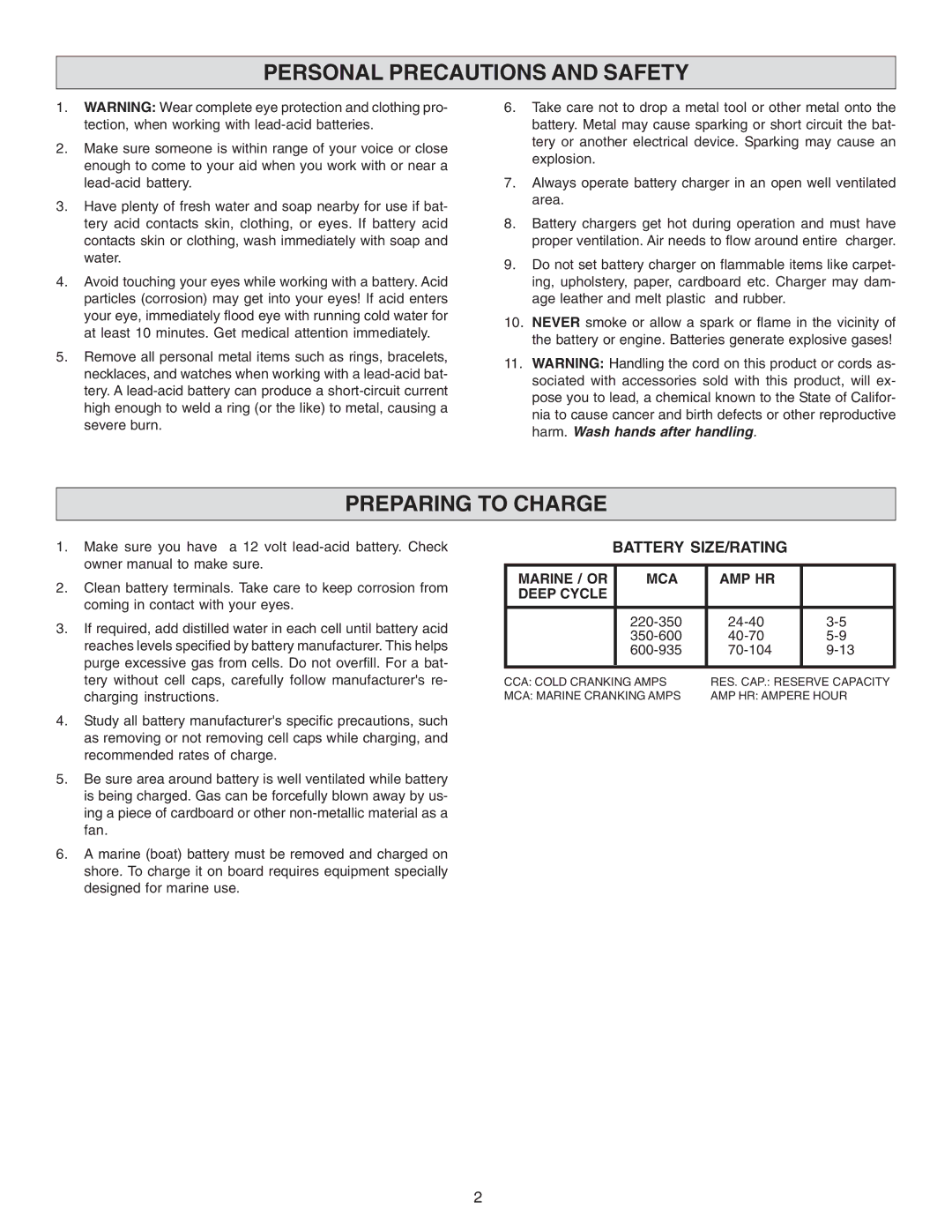
PERSONAL PRECAUTIONS AND SAFETY
1.WARNING: Wear complete eye protection and clothing pro- tection, when working with
2.Make sure someone is within range of your voice or close enough to come to your aid when you work with or near a
3.Have plenty of fresh water and soap nearby for use if bat- tery acid contacts skin, clothing, or eyes. If battery acid contacts skin or clothing, wash immediately with soap and water.
4.Avoid touching your eyes while working with a battery. Acid particles (corrosion) may get into your eyes! If acid enters your eye, immediately flood eye with running cold water for at least 10 minutes. Get medical attention immediately.
5.Remove all personal metal items such as rings, bracelets, necklaces, and watches when working with a
6.Take care not to drop a metal tool or other metal onto the battery. Metal may cause sparking or short circuit the bat- tery or another electrical device. Sparking may cause an explosion.
7.Always operate battery charger in an open well ventilated area.
8.Battery chargers get hot during operation and must have proper ventilation. Air needs to flow around entire charger.
9.Do not set battery charger on flammable items like carpet- ing, upholstery, paper, cardboard etc. Charger may dam- age leather and melt plastic and rubber.
10.NEVER smoke or allow a spark or flame in the vicinity of the battery or engine. Batteries generate explosive gases!
11.WARNING: Handling the cord on this product or cords as- sociated with accessories sold with this product, will ex- pose you to lead, a chemical known to the State of Califor- nia to cause cancer and birth defects or other reproductive harm. Wash hands after handling.
PREPARING TO CHARGE
1.Make sure you have a 12 volt
2.Clean battery terminals. Take care to keep corrosion from coming in contact with your eyes.
3.If required, add distilled water in each cell until battery acid reaches levels specified by battery manufacturer. This helps purge excessive gas from cells. Do not overfill. For a bat- tery without cell caps, carefully follow manufacturer's re- charging instructions.
4.Study all battery manufacturer's specific precautions, such as removing or not removing cell caps while charging, and recommended rates of charge.
5.Be sure area around battery is well ventilated while battery is being charged. Gas can be forcefully blown away by us- ing a piece of cardboard or other
6.A marine (boat) battery must be removed and charged on shore. To charge it on board requires equipment specially designed for marine use.
BATTERY SIZE/RATING
MARINE / OR | MCA | AMP HR |
|
DEEP CYCLE |
|
|
|
|
|
|
|
|
|
| |
|
|
| |
|
|
| |
|
|
|
|
CCA: COLD CRANKING AMPS | RES. CAP.: RESERVE CAPACITY | ||
MCA: MARINE CRANKING AMPS | AMP HR: AMPERE HOUR | ||
2
